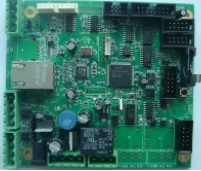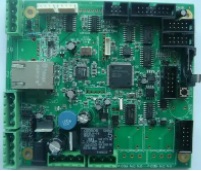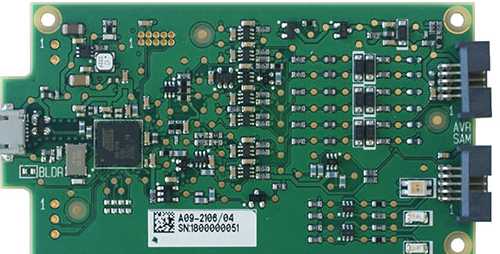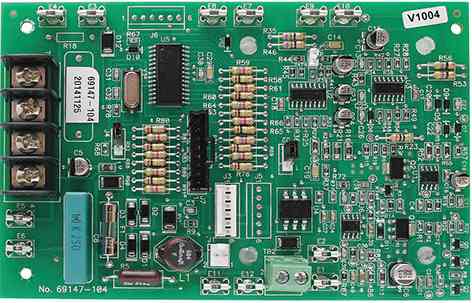
kinhford Design answers frequently asked questions about circuit board densig
the design of electronic products, and wiring is the most important step, PCB layout and wiring will directly affect the performance of the circuit. Now, though, there is a lot of software that can realize automatic PCB layout and routing. But as signal frequencies continue to increase, engineers often need to understand the most basic principles and techniques of PCB layout and wiring to make their designs perfect.
1, [Q] What problems should be paid attention to when wiring high-frequency signals? https://www.kingfordpcb.com/yuan.php
https://www.kingfordpcb.com/yuan.php
[A]1. Impedance matching of signal lines;
2. Spatial isolation from other signal cables;
3. For digital high-frequency signals, the difference line effect will be better;
2, [question] in the cloth board, if the line is dense, the hole may be more, of course, will affect the electrical performance of the board, how to improve the electrical performance of the board?
[A] For low-frequency signals, the hole does not matter, high-frequency signals to minimize the hole. If the line is more than can consider multilayer board;
3. [Q] Is it better to add more decoupling capacitors to the board?
[A] The decoupling capacitor needs to be at the right place with the right value. For example, in your simulator part of the power supply port, and need to use different capacitance values to filter out different frequencies of stray signals;
4, [Q] What is the standard of a good board?
[A] Reasonable layout, sufficient power redundancy of power lines, high frequency impedance, low frequency routing simple.
5. [Q] How big is the difference between the through hole and the blind hole? What are the principles that apply?
[A] Using blind or buried holes is an effective way to increase the density of multilayer plates, reduce the number of layers and surface size, and greatly reduce the number of coated through holes. But in comparison, through hole in the process of better realization, lower cost, so the general design is used through hole.
6. [Q] When it comes to the analog digital hybrid system, some people suggest that the electric layer is divided, the ground plane adopts the whole piece of copper, and some people suggest that the electric layer is divided, and different ground is connected at the end of the electricity supply, but this way the signal return path is far away, how to choose the appropriate method in the specific application?
[A] If you have high frequency > 20MHz signal line, and the length and number of relatively large, then need at least two layers for this analog high frequency signal. A signal line, a large area, and the signal line layer needs to be drilled enough holes to the ground. The purpose of this is to:
1. For analog signals, this provides a complete transmission medium and impedance matching;
2, the ground plane to the analog signal and other digital signals are isolated;
3, the ground loop is small enough, because you punched a lot of holes, the ground is a big plane.
7, [Q] in the circuit board, the signal input plug-in is on the left side of the PCB, mcu is on the right side, so in the layout of the voltage regulator power supply chip is placed near the plug-in (power IC output 5V through a long path to MCU), or the power supply IC placed to the right of the middle (power IC output 5V line to MCU is shorter, But the input power line goes through a relatively long PCB board)? Or a better layout?
[A] First of all, is your so-called signal input plug-in an emulator? If it is a simulator, it is recommended that your power layout should try not to affect the signal integrity of the analog part. So here are a few things to consider:
(1) First of all, your regulated power supply chip is relatively clean, small ripple power supply. For the analog part of the power supply, the requirement of the power supply is relatively high.
(2) Whether the analog part and your MCU are a power supply? In the design of high-precision circuit, it is suggested to separate the analog part and the digital part of the power supply.
(3) The power supply of the digital part should be taken into account to minimize the impact on the analog part of the circuit.
8. [Q] In the application of high-speed signal chain, there are analog ground and digital ground for multiple ASics. Should we use ground segmentation or unsegmentation? What is the existing norm? Which works better?
[A] So far, no conclusion. You can usually refer to the manual of the chip. The manual for all ADI hybrid chips recommends a ground solution, some common and some isolated. It depends on the chip design.
9. [Q] When should we consider the length of lines? What is the maximum difference between the lengths of the two signal wires if an equal length is to be considered? How do you calculate it?
If you transmit a sinusoidal signal, and your length difference is equal to half of its transmission wavelength, the phase difference is 180 degrees, then the two signals will cancel out completely. So this is the maximum length difference. By analogy, the signal line difference must be less than this value.
10. [Q] What kind of snaking is suitable for the highway? Are there any disadvantages, like for differential routing, the two sets of signals are required to be orthogonal?
[A] Serpentine routing has different functions depending on the application situation:
(1) If the serpentine routing appears in the computer board, it mainly plays a role of filtering inductance and impedance matching, improving the anti-interference ability of the circuit. The snaking cable in the computer main board is mainly used in some clock signals, such as PCI-Clk,AGPCIK,IDE,DIMM and other signal cables.
(2) If in the general ordinary PCB board, in addition to the role of filtering inductance, but also as a radio antenna inductance coil and so on. For example, 2.4G intercom is used as inductor.
(3) The wiring length of some signals must be strictly equal in length. The equilinear length of high-speed digital PCB board is to keep the delay difference of each signal within a range and ensure the validity of the data read by the system in the same cycle (when the delay difference exceeds one clock cycle, the data of the next cycle will be misread).
(4) The serpentine route plays the role of a distributed parameter LC filter in some special circuits.
11. [Q] How to consider electromagnetic compatibility (EMC) /EMI when designing PCB, and what specific aspects should be considered? What measures should be taken?
[A] A good EMI/EMC design must take into account the location of the device, the arrangement of PCB layers, the routing of important connections, the selection of devices, etc., at the very beginning of the layout.
For example, when locating clock generators as close to a slew connector as possible, when taking high speed signals inwards and taking care to slew characteristic impedance matching into the reference layer to reduce reflection, when using a slew rate as low as possible to reduce slew components, When selecting the decoupling/bypass capacitor, check whether the frequency response meets the requirement to reduce the noise of the power layer. In addition, note the return path of the high frequency signal current so that the loop area is as small as possible (i.e. loop impedance is as small as possible) to reduce radiation. In addition, the range of high frequency noise can be controlled by dividing the formation. Finally, the ground point of PCB and the shell can be selected appropriately
12. [Q] What should we pay attention to in the transmission line design of RF broadband circuit PCB? How to set the ground hole of the transmission line appropriately? Should we design the impedance matching by ourselves or cooperate with the PCB manufacturer?









